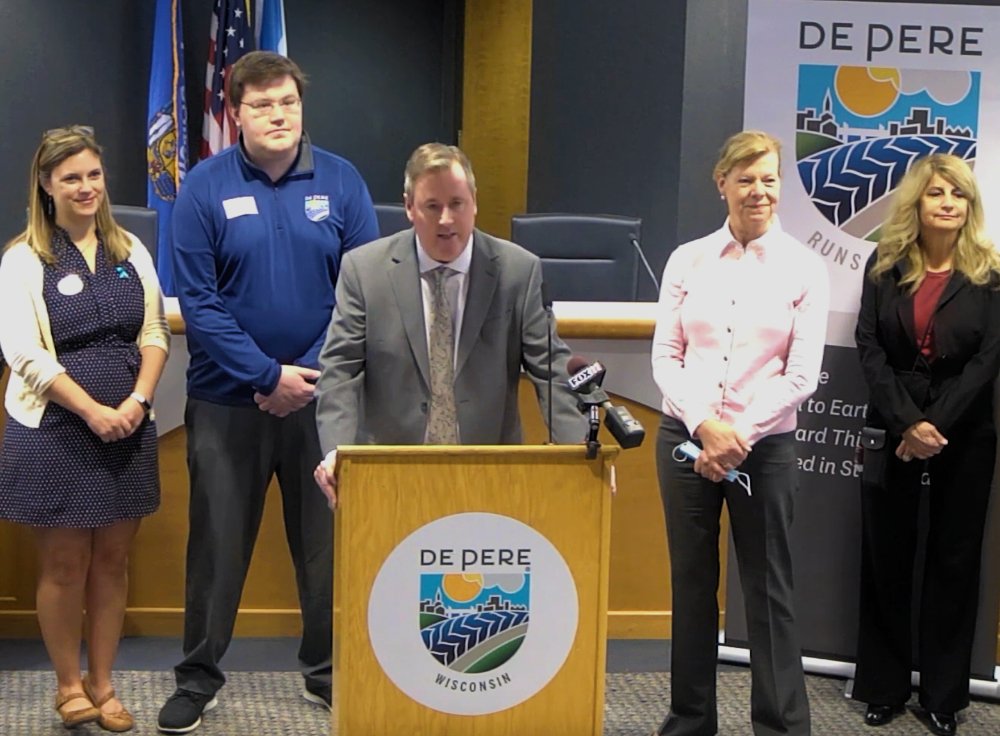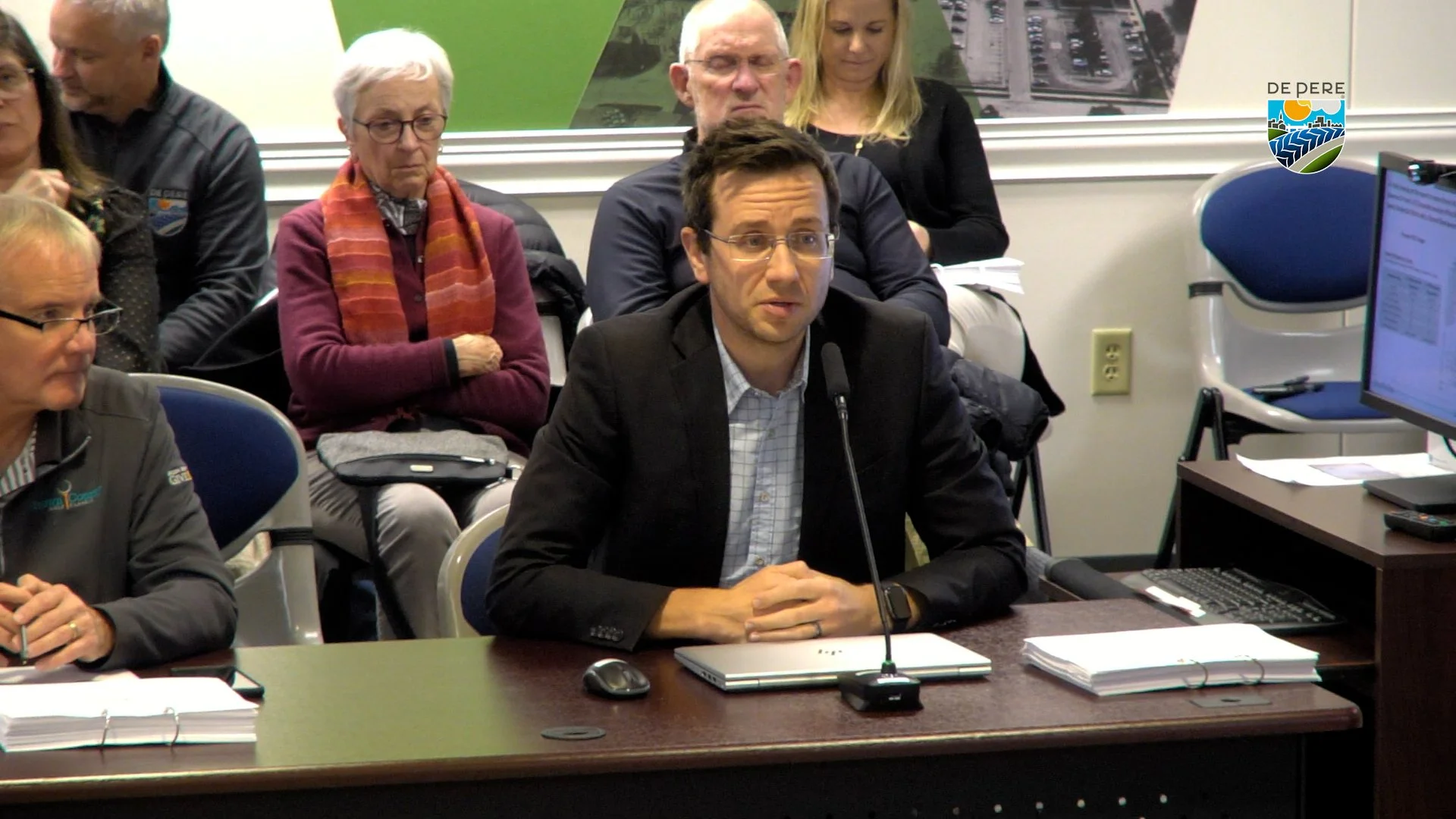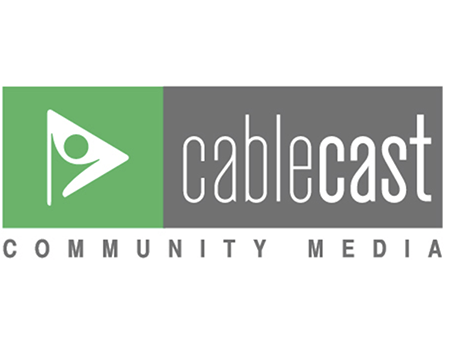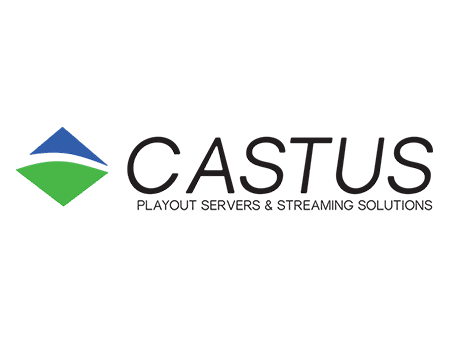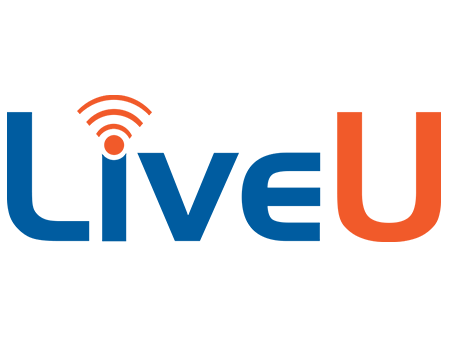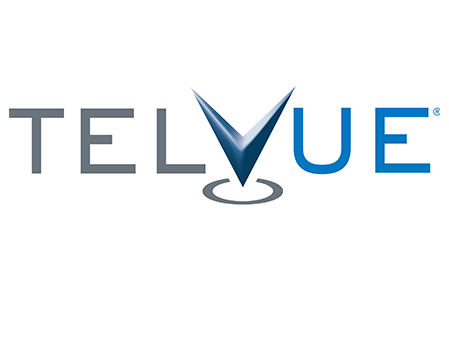Madison City Channel serves the city government of the state’s capital, Madison. “This is a very politically involved and politically active community, a very educated community,” said Boyce Johnson, Digital Media Team Supervisor for the City of Madison. “It’s full of people who really want to know what’s going on. They want to be involved in public policy. They demand access to it, and we aren’t afraid of that. We like that.”
Johnson has seen a lot of changes during his time at Madison City Channel. “Back in the day it was more about us pushing information out to residents. We still do that, but in some ways, it’s turned around. It’s also gathering information from residents so that policymakers and staff are informed by the community when they’re going to make a decision. So, a lot of what we’re doing isn’t just pushing information out to residents, its working with city staff and with city agencies to get good feedback.”
For example, the Parks Division is developing a 100-year master plan for the Lake Monona waterfront. Three architectural firms are competing for the contract. Madison City Channel is coordinating a series of hybrid events featuring presentations by the firms and questions and comments from not only in-person attendees, but also those viewing the event online. Using Mediasite, an application by Sonic Foundry, attendees will be able to submit comments and questions and participate in real time polling.
“We are more than just a TV channel,” said Johnson.
Madison City Channel distributes programming in lots of different ways. Residents in the greater Madison area can see Madison City Channel on Spectrum 994 (Spectrum moved it from channel 12 in 2008) and AT&T U-Verse channel 99. City Channel is also found on Roku, Apple TV, and on the City of Madison website at http://www.madisoncitychannel.com. Some shows can also be seen on YouTube. But since the pandemic, there has been a strong emphasis on community-wide interactive communication.
Springing into action with hybrid meetings
“When the COVID pandemic hit in March of 2020, we were in the middle of one of our regular Tuesday morning meetings and the IT Director came bursting through the door,” said Johnson. “‘Put your meeting on hold. We need you to figure out how every board and committee and commission in the city can conduct their meetings virtually.’ ‘How long do we have to do it?’ ‘How soon can you do it?’ So in ten working days we stood up a system to allow 109 boards, committees, and commissions to conduct their business.” That’s right – 109 of them. When Johnson was asked how the team felt after this big accomplishment, he pondered and said, “I think we knew we could do it. My team is very competent. And I also have a team that is very confident. They know they’re good; and, yeah… they were pretty happy about it. It was huge. It was a ridiculous request but we try to honor ridiculous requests (laughing).”
Since the pandemic, City Channel has taken on responsibility for incorporating all kinds of presentation technology into city conference and meeting rooms and training employees on how to use it. The work includes incorporating videoconferencing into the city’s public library branches, enabling any resident to attend meetings or meet with city staff virtually without traveling downtown. “It makes us extremely valuable to the city,” said Johnson.
Most of Madison’s various committees have decided they want to continue to meet virtually even as the worst dangers of the pandemic have passed, and life has, in most ways, gone back to normal. Madison City Channel is busy making that possible. In addition, meetings continue to be streamed live from the webpage dedicated to the committee, where a click will take you to the committee’s playlist on the Madison City Channel on-demand website page at http://www.madisoncitychannel.com. A priority list determines which meetings are played live on the government access channel.
City Channel staff keeps growing
All these new responsibilities have led to the growth of Madison City Channel staff. Johnson now manages six full time digital media specialists. In recent months, one part-time employee was upgraded to full-time and an AV Systems Specialist position was created. This person is responsible for serving the city’s AV needs and maintaining the internal production systems, the control rooms, and switchers. Madison City Channel also uses four hourly technicians to help with production work – a number that is down dramatically as a result of the reduced number of events since the pandemic, although event coverage is starting to pick up again.
While there are differences in the position descriptions of the digital media specialists, everyone on staff is cross-trained, including the AV specialist. Johnson says the department cannot afford to have compartmentalized responsibilities. “I want everyone to do some of the engineering work and some of the AV work because I want everyone to know how the signal flow works, and how this stuff is connected so if there’s a problem, anyone can step in and have a reasonable chance of fixing it.”
How it all began and surviving Wisconsin Act 42
CitiCable 12 is one of the oldest PEG (Public, Education, Government) cable access channels, going on the air in the mid-1970s after the city signed a franchise agreement with Complete Channel TV in 1973. The franchise was later sold to TCI, then to Charter Communications (Spectrum). CitiCable 12 first originated from the Madison Public Library, but soon moved to the City County Building, where a couple of small closets were cleared out for master control, an editing bay, and two desks for the three full-time staff members. A dozen work-study students and a couple of part-timers were needed move and set up field equipment to cover live city, county, and school board meetings, create features, and produce interview shows that took place in one of the larger rooms in the building. Eventually CitiCable 12 moved across the street to the Madison Municipal Building, where a courtroom was outfitted with a lighting grid and drape and the office area was nothing short of spacious. In 2016 Madison City Channel moved back across the street into comfortable offices in the City County Building, where it also has a studio.
Major financial difficulties occurred in 2011 when Madison City Channel was forced to reorganize to absorb the loss of half its budget when PEG fees paid by cable companies to support PEG access channels ended due to a provision in 2007 Wisconsin Act 42. Called the Video Competition Act, Act 42’s primary purpose was to enable AT&T to get into the cable business quickly by moving cable franchising from the local to the state level. The cable industry supported it because it weakened government oversight and ended all financial support and technical standards for local PEG access channels. To handle the loss, the City of Madison decided to reduce three supervisory positions to one half-time position and merge Madison City Channel with the Information Technology Department. After a few years, the half-time supervisor decided to retire and Madison City Channel moved into the Technical Services Division, as one of several “teams.” “We got a lot of support from the IT Team,” said Johnson. “What we do is all IT. Highly specialized IT. It’s funny. It’s kind of all full circle. I started out in 5th grade working on teletypes that were attached to a mainframe in the suburbs of the Twin Cities and really being more on the IT end of things and got into television all the while watching it slowly merge back into IT.”
Another high schooler catches the PEG TV bug
Johnson’s interest in computers continued at Cannon Falls High School, and it got him tapped to put together a computer lab and then a video production studio. One day a pile of boxes filled with production equipment appeared. The local cable franchise agreement had been signed and this equipment would be used to capitalize the PEG access channel. Operating funding was secured, too. Johnson was tasked with setting up the studio and managing it. “I brought kids out of study hall to do the production work,” he said. The group covered high school sports and school events and then expanded to city and county meetings, candidate debates and community events. During his junior and senior years he took community college classes and enrolled in Film in the Cities, a small, innovative film program that gave college credit to high school students. In 1990 he transferred to UW-Madison and began working at CitiCable 12 as a work study student. When Johnson realized the UW did not offer a strong video production program, he dropped out and the City of Madison hired him directly. In 1994, he was hired full-time.
Serving the local press, the community, and city departments
During his tenure Johnson has seen how commercial journalists have increasingly come to rely on Madison City Channel coverage of events and meetings. “Back in the day, we had a press room that was adjacent to the city council chambers,” he said. “Members of the press were crawling around the building all day long. That’s all gone. Instead they’re watching our livestreams. If they don’t see something, they’ll call us. We also get feedback from not-for-profits and people and organizations that are really involved in public policy and come before our boards and commissions. They often say what we provide is absolutely crucial to them.”
Madison City Channel leaves social media to individual city offices, agencies and departments to handle but serves virtually all the video production needs of these departments to maintain a high-quality standard in city-generated programming. “We don’t have to drum up business. In fact, we have the opposite problem, keeping requests in line with the ability of our staff to complete them.” The team uses a set of selection criteria to help them determine what projects to undertake. Who is the requester? Are any major public officials involved in the event? Is the city a sponsor? Does it take place in a city facility? They also do an equity analysis. Johnson said, “We ask ourselves, does this program have the potential to have any unintended consequences for underserved communities or conversely would this be beneficial to underserved communities?” The team also looks at whether a program aligns with the city’s stated principles and the seven core values spelled out in the City’s comprehensive plan. Finally, the team looks at the amount of time the production is likely to take and tries to provide its services fairly across departments. Feature projects, even short ones, can take up a lot of time. Sometimes a department may need to wait. If the team decides that a project can be done, any team member can volunteer to take it on. Once they do, they are responsible for its successful completion.
TDS is excited to carry Madison City Channel in HD
TDS will be adding Madison City Channel to the lineup in 2023. “We’re excited,” said Johnson. Unlike Charter Spectrum, TDS has been eager to offer the government access channel in HD. “We have been working with their engineers to find the most effective transmission process to deliver our channel to their system in high quality HD,” Johnson said. There are lots of options and they’ve been great. They’re happy to have us on their system. They seem just delighted to get the content. It’s another channel they can add. It’s more content for them to sell.”
“We’re trying to make sure that people have the most complete knowledge they can, to make decisions and to establish the best practices and policies that create the most livable community and create the best outcomes for everyone involved.”
Johnson views Madison City Channel and other community television stations as extremely important sources of local information. “Community television is the only place that’s left where you’re going to be presented with real information,” he said. “Commercial media at this point is opinion and pot-stirring and manufacturing conflict and sides. These people say this and these people say this. They’re not concerned with making information available to people. They’re not concerned with just presenting facts. We are. We’re trying to make sure that people have the most complete knowledge they can, to make decisions and to establish the best practices and policies that create the most livable community and create the best outcomes for everyone involved. Local media is the only media that does that. The only media that really has that interest anymore.”
“I am very proud of how this agency has become very nimble and very quick on its feet, and how we have taken on digital engagement along with traditional media. And I am also very proud of the commitment our people have to providing real information to our community.”













